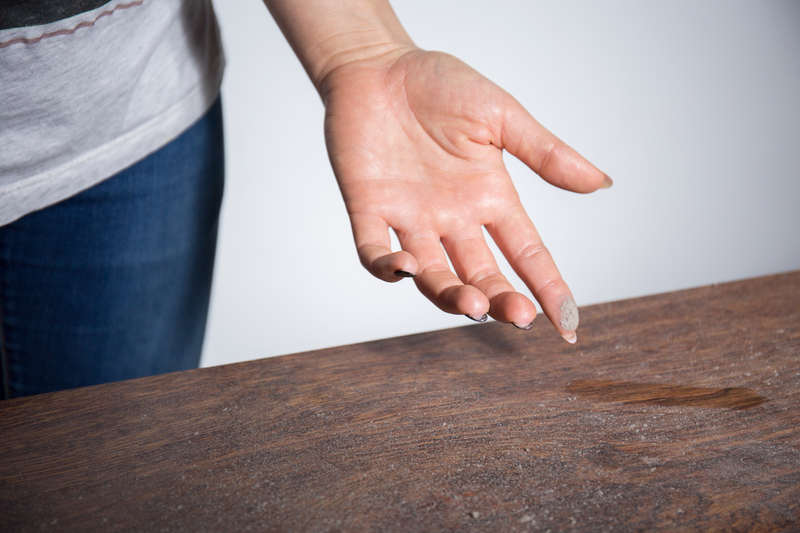Introduction
Mould can be a silent invader in your home, contributing to health issues and compromising the integrity of your house. Discovering ways to keep your home mould-free is essential for maintaining a healthy living environment. This article provides invaluable tips on preventing mould growth, ensuring a safer, healthier home for you and your loved ones.

What Causes Mould?
Before delving into prevention, it's important to understand what causes mould. Mould thrives in damp, dark, and humid environments. Leakage, poor ventilation, and high moisture levels are common culprits. Understanding these factors allows you to take proactive measures toward mould prevention.
Keep Your Home Dry
The key to mould prevention is moisture control. Ensure areas prone to dampness--such as bathrooms, kitchens, and basements--are kept dry. Use dehumidifiers in humid areas and make sure to repair leaks promptly. For added assurance, consider installing moisture barriers in basements and crawl spaces.
Improve Ventilation
Proper ventilation is essential in preventing mould growth. Ensure that areas with high moisture levels, such as kitchens and bathrooms, have adequate ventilation. This could mean installing exhaust fans that vent outside, ensuring that air flows freely through spaces, or even opening windows periodically to circulate fresh air.
Regular Cleaning
Regular cleaning minimizes the chances of mould spores finding a place to grow. Use mould-killing products to clean bathrooms and kitchens. Pay special attention to areas like shower curtains, window sills, and under sinks. Regularly wash and dry fabrics like rugs, curtains, and upholstery, which can harbor mould spores.
Monitor Humidity Levels
Keeping an eye on your home's humidity levels can help you stay ahead of mould. Invest in a hygrometer to measure indoor humidity. The ideal level is below 60%, with 30-50% being optimal. If humidity levels are high, use dehumidifiers or air conditioners to lower them.
Inspect Problem Areas
Areas such as basements, attics, and crawl spaces are more susceptible to mould growth. Regularly inspect these areas for any signs of mould, dampness, or water leaks. Taking immediate action upon discovering any issues can prevent mould from spreading.
Practical Tips for a Mould-Free Home
- **Use Mould-Resistant Products**: When renovating or building, use mould-resistant drywall, paints, and insulation to mitigate mould growth.
- **Repair Leaks Immediately**: Whether it's a dripping faucet or a leaking roof, promptly repairing any water leaks is crucial.
- **Place Plants Strategically**: Some houseplants can add to home humidity. Place them in well-ventilated areas and avoid over-watering.
- **Keep Gutters Clean**: Ensure your gutters are clean and directing water away from your home to prevent water from seeping into walls and foundations.
- **Use Exhaust Fans**: In bathrooms, kitchens, and laundry rooms, use exhaust fans to reduce moisture.
- **Seal Windows and Doors**: Properly sealed windows and doors help in preventing moisture from entering your home.
Pros and Cons of Mould Prevention
**Pros:**
- **Health Benefits**: Reducing mould minimizes respiratory problems, allergies, and other health issues.
- **Structural Integrity**: Preventing mould protects your home's structure, avoiding costly repairs.
- **Enhanced Comfort**: A dry, mould-free home contributes to overall comfort and well-being.
**Cons:**
- **Initial Costs**: Mould remediation and preventive measures, like installing dehumidifiers and exhaust fans, can involve upfront costs.
- **Maintenance Effort**: Regular inspections and cleaning require consistent effort and diligence.
- **Professional Services**: In severe cases, expert services may be required, which can be costly.

Takeaways
Mould prevention is a proactive process involving moisture control, regular inspection, and proper ventilation. By maintaining a dry environment and swiftly addressing any leaks or areas of excess moisture, you significantly reduce the risk of mould. Implementing these practical tips ensures a healthier living space and protects your home's structural integrity.
Conclusion
Ensuring a mould-free home is essential for health and structural integrity. By keeping your home dry, improving ventilation, monitoring humidity levels, and regularly cleaning, you can minimize the risk of mould growth. While there are initial costs and maintenance efforts involved, the long-term benefits of a mould-free home far outweigh any disadvantages. Implement these tips, and enjoy a healthier, more comfortable living environment.



